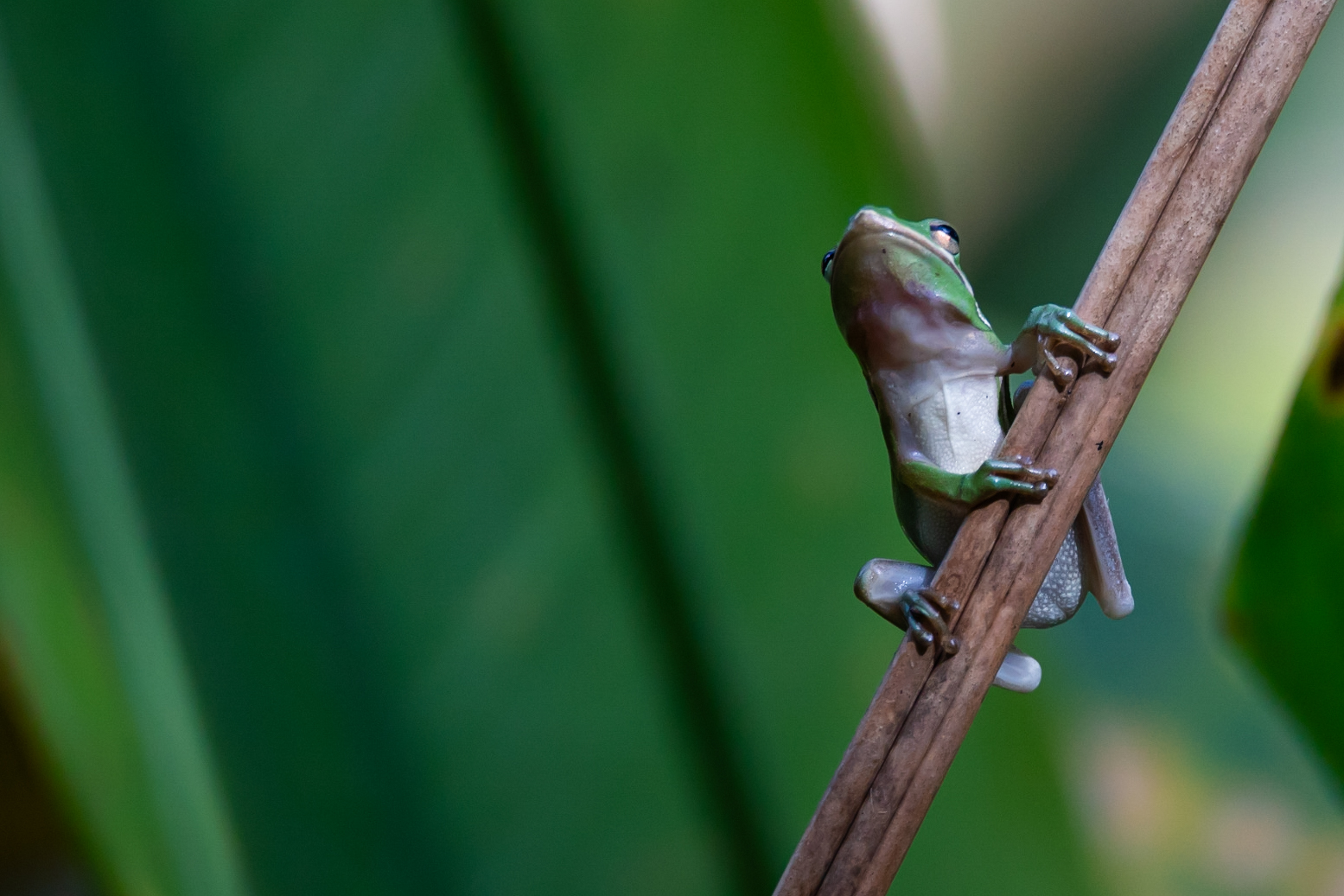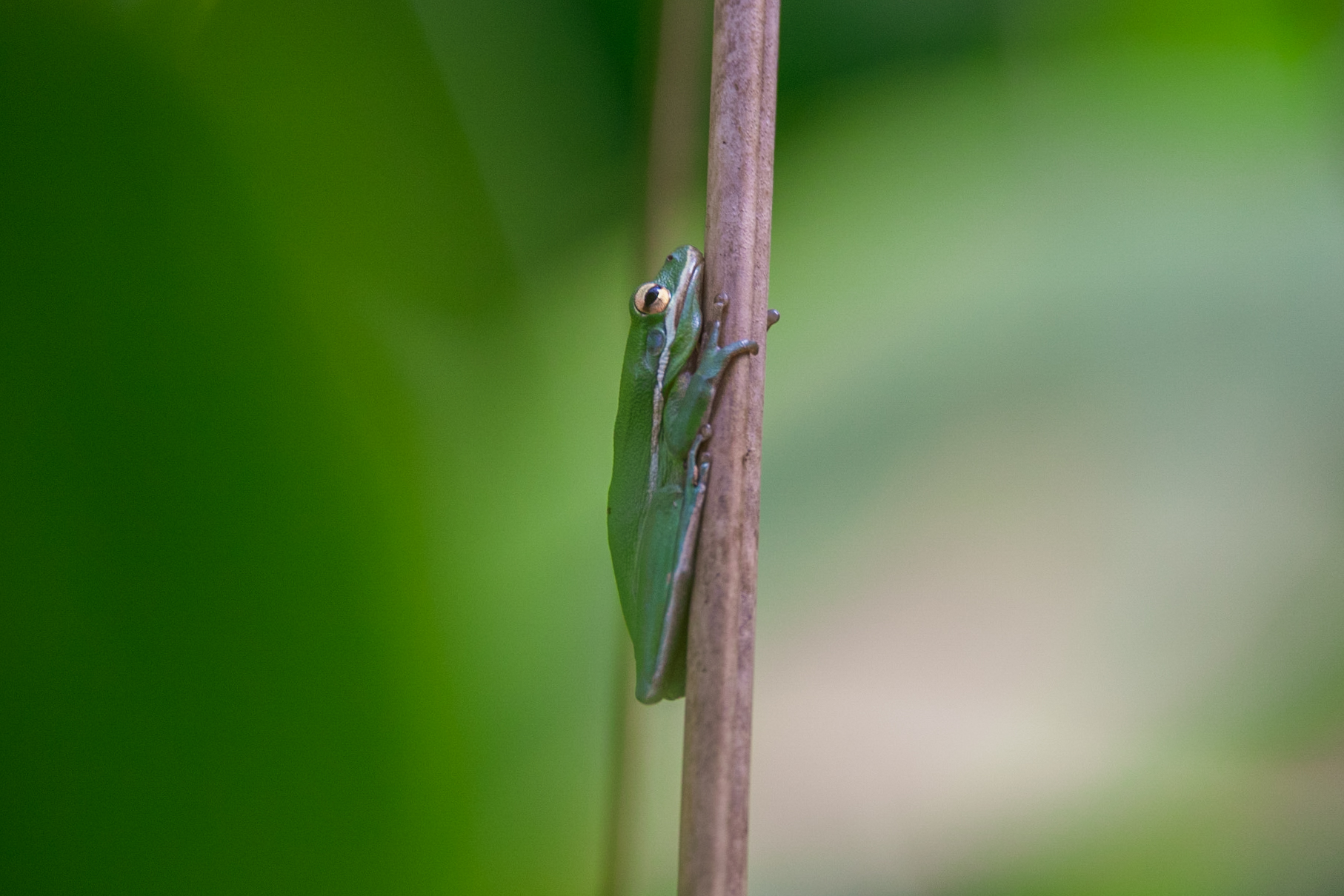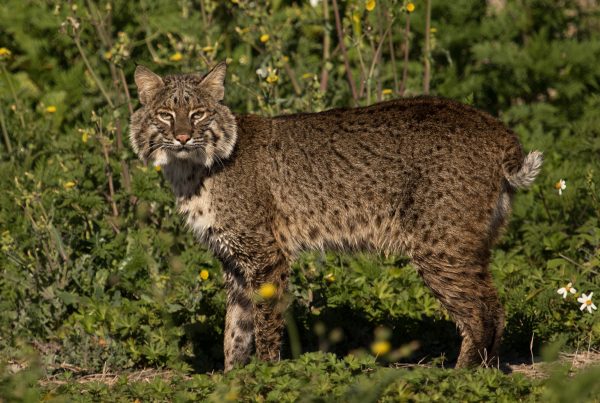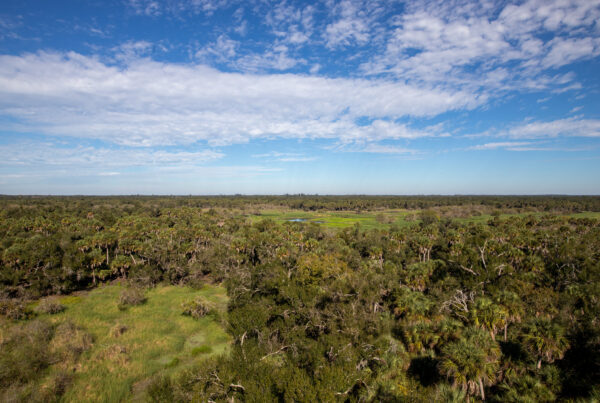When summer storms roll through, they bring more than just thunder and lightning—they awaken a chorus of wildlife across Florida’s wetlands. One of the most recognizable voices in that symphony? The cheerful quonk of the green treefrog (Hyla cinerea). Found throughout the southeastern United States, this small but spirited native amphibian is a classic sound of Florida’s rainy season.

Green treefrogs thrive in warm, humid environments and can be found just about anywhere water and vegetation meet: along the edges of marshes, in cypress domes and swamps, and even perched on windowsills in suburban neighborhoods. Thanks to their sticky toe pads, these agile climbers can scale smooth vertical surfaces with ease—so don’t be surprised to find one clinging to your window after a summer downpour!
Life in the Rain: Ecology of the Green Treefrog
Green treefrogs play a vital role in Florida’s ecosystems. They feed primarily on insects like mosquitoes and flies, helping to naturally control pest populations. Their breeding season is closely tied to the wet months of late spring through early fall, when males call loudly to attract mates—often forming large, vocal choruses around ponds, ditches, and wetlands.
Green treefrogs are more than just a fun sign of summer—they’re a glimpse into an ecosystem’s health. Because amphibians breathe through their skin and rely on clean water, they’re especially sensitive to pollution and habitat changes. That makes them excellent bioindicators: if treefrogs are thriving, it’s a good sign the environment is too.
By protecting wetlands, avoiding pesticides, and planting native vegetation around your home, you can help create safe spaces for frogs and the many other species that depend on Florida’s freshwater ecosystems.

Green tree frog. Photo by Federico Acevedo
How (and Where) to Spot Them
These frogs are nocturnal and masters of camouflage, spending the day tucked into leafy hiding spots. You’re most likely to see or hear them:
- After a summer rainstorm
- Near porch lights or windows where insects gather
- In gardens with native plants and small water features
- Hopping through thick vegetation in the evening
For an even better chance, head outside with a flashlight covered in red cellophane—frogs are less disturbed by red light, making it easier to observe them without causing stress.

Green tree frog. Photo by Federico Acevedo
Want to welcome green treefrogs to your own backyard? It’s easier than you think! With just a few simple materials, you can build a simple, cozy frog house with PVC pipes that provides shelter and attracts these charming amphibians to your garden.
As vital indicators of ecosystem health, green tree frogs need healthy habitats along with countless other Florida native species. Help us keep Florida wild and support our efforts to protect the places these frogs call home.





